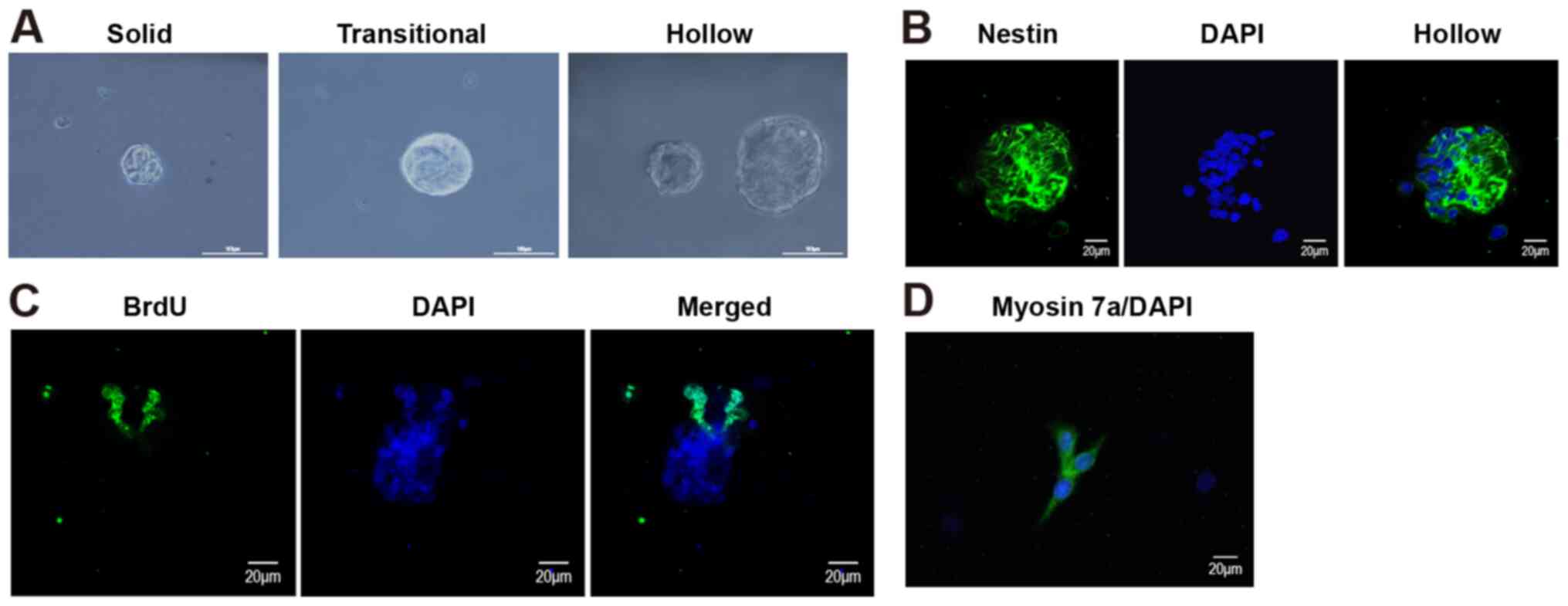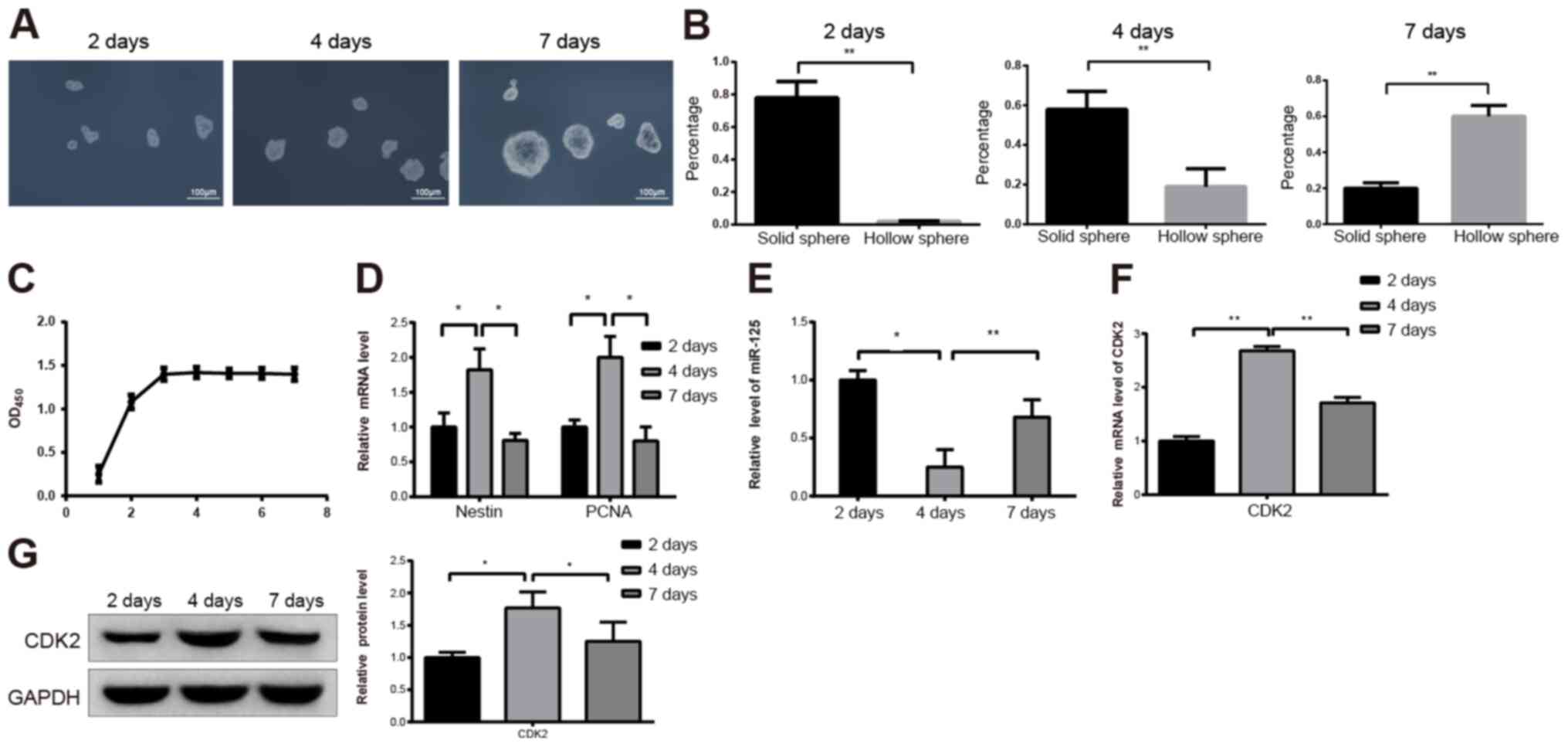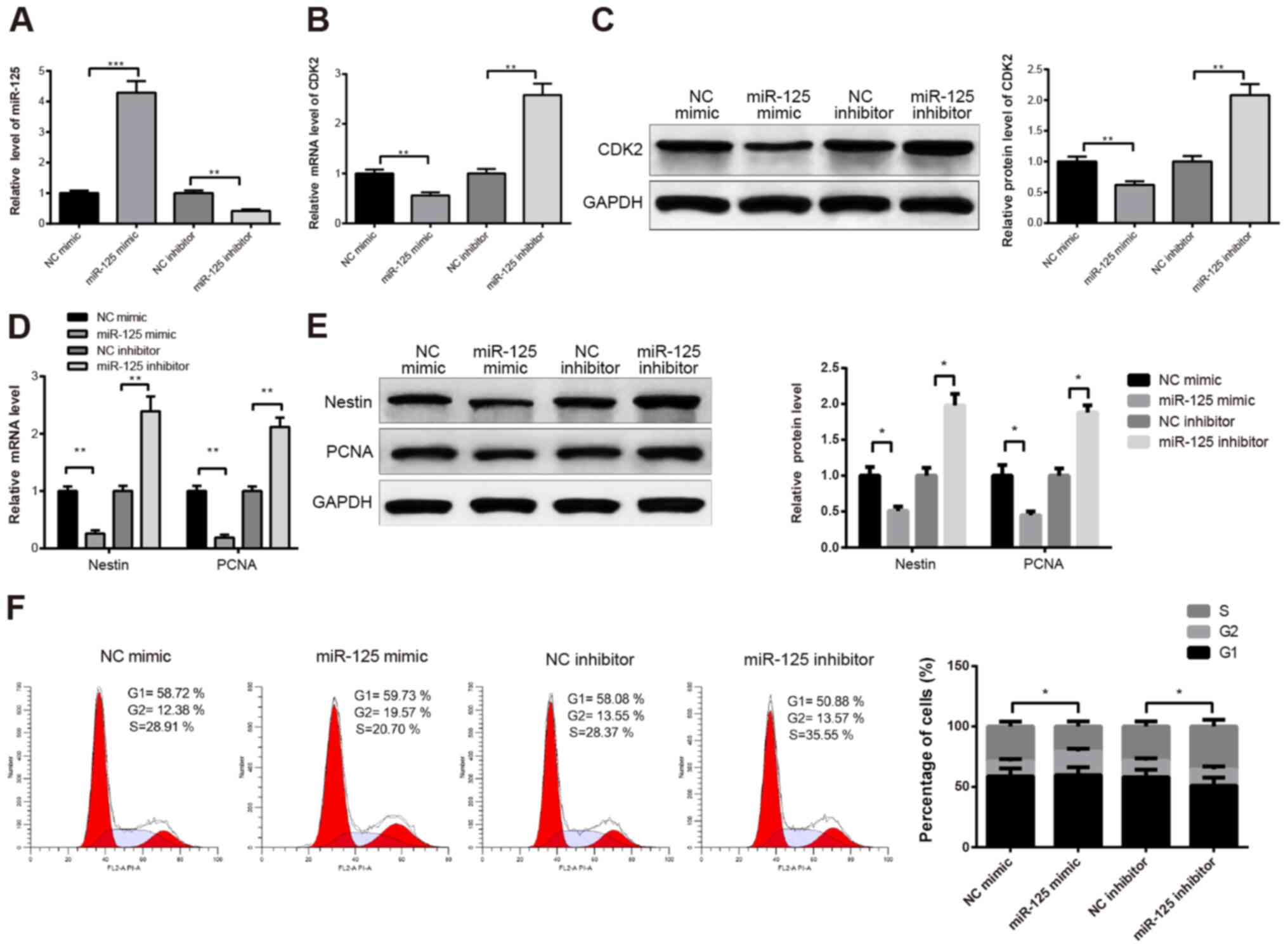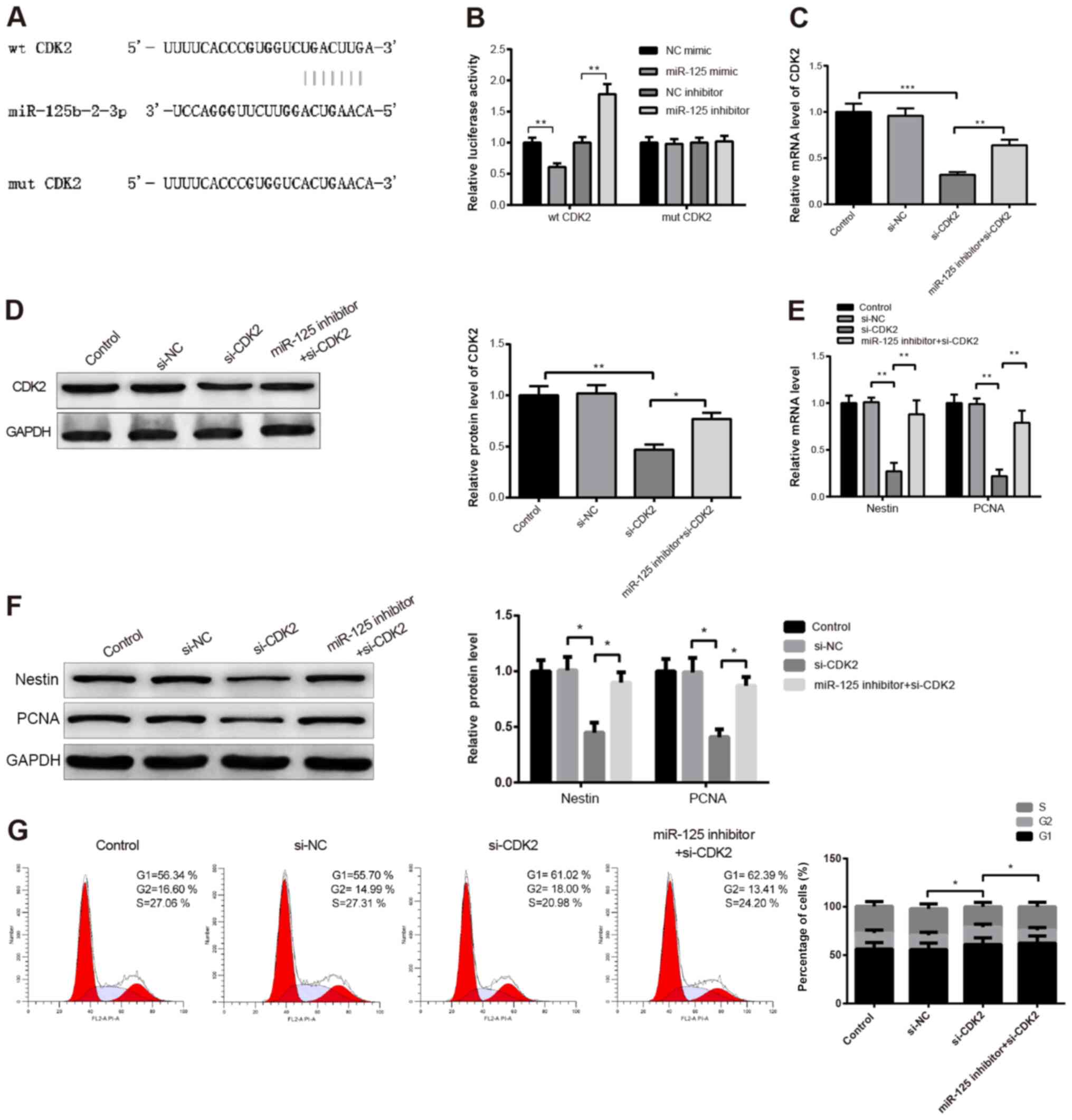|
1
|
Cunningham LL and Tucci DL: Hearing loss
in adults. N Engl J Med. 377:2465–2473. 2017. View Article : Google Scholar
|
|
2
|
Kim YR, Baek JI, Kim SH, Kim MA, Lee B,
Ryu N, Kim KH, Choi DG, Kim HM, Murphy MP, et al: Therapeutic
potential of the mitochondria-targeted antioxidant MitoQ in
mitochondrial-ROS induced sensorineural hearing loss caused by Idh2
deficiency. Redox Biol. 20:544–555. 2019. View Article : Google Scholar
|
|
3
|
Tang M, Yan X, Tang Q, Guo R, Da P and Li
D: Potential application of electrical stimulation in stem
cell-based treatment against hearing loss. Neural Plast.
2018:95063872018. View Article : Google Scholar
|
|
4
|
Lee MY and Park YH: Potential of gene and
cell therapy for inner ear hair cells. Biomed Res Int.
2018:81376142018. View Article : Google Scholar
|
|
5
|
Roccio M, Perny M, Ealy M, Widmer HR,
Heller S and Senn P: Molecular characterization and prospective
isolation of human fetal cochlear hair cell progenitors. Nat
Commun. 9:40272018. View Article : Google Scholar
|
|
6
|
Lin SCY, Thorne PR, Housley GD and
Vlajkovic SM: Purinergic signaling and aminoglycoside ototoxicity:
The opposing roles of P1 (Adenosine) and P2 (ATP) receptors on
cochlear hair cell survival. Front Cell Neurosci. 13:2072019.
View Article : Google Scholar
|
|
7
|
Revuelta M, Santaolalla F, Arteaga O,
Alvarez A, Sanchez-Del-Rey A and Hilario E: Recent advances in
cochlear hair cell regeneration-A promising opportunity for the
treatment of age-related hearing loss. Ageing Res Rev. 36:149–155.
2017. View Article : Google Scholar
|
|
8
|
Youm I and Li W: Cochlear hair cell
regeneration: An emerging opportunity to cure noise-induced
sensorineural hearing loss. Drug Discov Today. 23:1564–1569. 2018.
View Article : Google Scholar
|
|
9
|
Huh SH, Warchol ME and Ornitz DM: Cochlear
progenitor number is controlled through mesenchymal FGF receptor
signaling. Elife. 4:e059212015. View Article : Google Scholar
|
|
10
|
Mittal R, Liu G, Polineni SP, Bencie N,
Yan D and Liu XZ: Role of microRNAs in inner ear development and
hearing loss. Gene. 686:49–55. 2019. View Article : Google Scholar
|
|
11
|
Pang J, Xiong H, Yang H, Ou Y, Xu Y, Huang
Q, Lai L, Chen S, Zhang Z, Cai Y and Zheng Y: Circulating miR-34a
levels correlate with age-related hearing loss in mice and humans.
Exp Gerontol. 76:58–67. 2016. View Article : Google Scholar
|
|
12
|
La Torre A, Georgi S and Reh TA: Conserved
microRNA pathway regulates developmental timing of retinal
neurogenesis. Proc Natl Acad Sci USA. 110:E2362–E2370. 2013.
View Article : Google Scholar
|
|
13
|
Li L, Wang Q, Yuan Z, Chen A, Liu Z, Wang
Z and Li H: LncRNA-MALAT1 promotes CPC proliferation and migration
in hypoxia by up-regulation of JMJD6 via sponging miR-125. Biochem
Biophys Res Commun. 499:711–718. 2018. View Article : Google Scholar
|
|
14
|
Spencer SL, Cappell SD, Tsai FC, Overton
KW, Wang CL and Meyer T: The proliferation-quiescence decision is
controlled by a bifurcation in CDK2 activity at mitotic exit. Cell.
155:369–383. 2013. View Article : Google Scholar
|
|
15
|
Livak KJ and Schmittgen TD: Analysis of
relative gene expression data using real-time quantitative PCR and
the 2(-Delta Delta C(T)) method. Methods. 25:402–408. 2001.
View Article : Google Scholar
|
|
16
|
Song YL, Tian KY, Mi WJ, Ding ZJ, Qiu Y,
Chen FQ, Zha DJ and Qiu JH: Decreased expression of TERT correlated
with postnatal cochlear development and proliferation reduction of
cochlear progenitor cells. Mol Med Rep. 17:6077–6083. 2018.
|
|
17
|
Zhang Y, Guo L, Lu X, Cheng C, Sun S, Li
W, Zhao L, Lai C, Zhang S, Yu C, et al: Characterization of
Lgr6+ cells as an enriched population of hair cell
progenitors compared to Lgr5+ cells for hair cell
generation in the neonatal mouse cochlea. Front Mol Neurosci.
11:1472018. View Article : Google Scholar
|
|
18
|
Gao J, Wan F, Tian M, Li Y, Li Y, Li Q,
Zhang J, Wang Y, Huang X, Zhang L and Si Y: Effects of
ginsenoside-Rg1 on the proliferation and gliallike directed
differentiation of embryonic rat cortical neural stem cells in
vitro. Mol Med Rep. 16:8875–8881. 2017. View Article : Google Scholar
|
|
19
|
Takeda H, Dondzillo A, Randall JA and
Gubbels SP: Challenges in cell-based therapies for the treatment of
hearing loss. Trends Neurosci. 41:823–837. 2018. View Article : Google Scholar
|
|
20
|
Hei R, Chen J, Qiao L, Li X, Mao X, Qiu J
and Qu J: Dynamic changes in microRNA expression during
differentiation of rat cochlear progenitor cells in vitro. Int J
Pediatr Otorhinolaryngol. 75:1010–1014. 2011. View Article : Google Scholar
|
|
21
|
Huyghe A, Van den Ackerveken P, Sacheli R,
Prevot PP, Thelen N, Renauld J, Thiry M, Delacroix L, Nguyen L and
Malgrange B: MicroRNA-124 regulates cell specification in the
cochlea through modulation of Sfrp4/5. Cell Rep. 13:31–42. 2015.
View Article : Google Scholar
|
|
22
|
Wang XR, Zhang XM, Du J and Jiang H:
MicroRNA-182 regulates otocyst-derived cell differentiation and
targets T-box1 gene. Hear Res. 286:55–63. 2012. View Article : Google Scholar
|
|
23
|
Yang M, Tang X, Wang Z, Wu X, Tang D and
Wang D: miR-125 inhibits colorectal cancer proliferation and
invasion by targeting TAZ. Biosci Rep. 39:BSR201901932019.
View Article : Google Scholar
|
|
24
|
Li L, Zhang M, Chen W, Wang R, Ye Z, Wang
Y, Li X and Cai C: LncRNA-HOTAIR inhibition aggravates oxidative
stress-induced H9c2 cells injury through suppression of MMP2 by
miR-125. Acta Biochim Biophys Sin (Shanghai). 50:996–1006. 2018.
View Article : Google Scholar
|
|
25
|
Tu XM, Gu YL and Ren GQ: miR-125a-3p
targetedly regulates GIT1 expression to inhibit osteoblastic
proliferation and differentiation. Exp Ther Med. 12:4099–4106.
2016. View Article : Google Scholar
|
|
26
|
Song Z, Jadali A, Fritzsch B and Kwan KY:
NEUROG1 regulates CDK2 to promote proliferation in Otic
progenitors. Stem Cell Reports. 9:1516–1529. 2017. View Article : Google Scholar
|
|
27
|
Kaur S, Abu-Shahba AG, Paananen RO,
Hongisto H, Hiidenmaa H, Skottman H, Seppanen-Kaijansinkko R and
Mannerström B: Small non-coding RNA landscape of extracellular
vesicles from human stem cells. Sci Rep. 8:155032018. View Article : Google Scholar
|
|
28
|
Malgrange B, Knockaert M, Belachew S,
Nguyen L, Moonen G, Meijer L and Lefebvre PP: The inhibition of
Cyclin-dependent kinases induces differentiation of supernumerary
hair cells and Deiters' cells in the developing organ of Corti.
FASEB J. 17:2136–2138. 2003. View Article : Google Scholar
|
|
29
|
Shenoy A, Danial M and Blelloch RH: Let-7
and miR-125 cooperate to prime progenitors for astrogliogenesis.
EMBO J. 34:1180–1194. 2015. View Article : Google Scholar
|


















